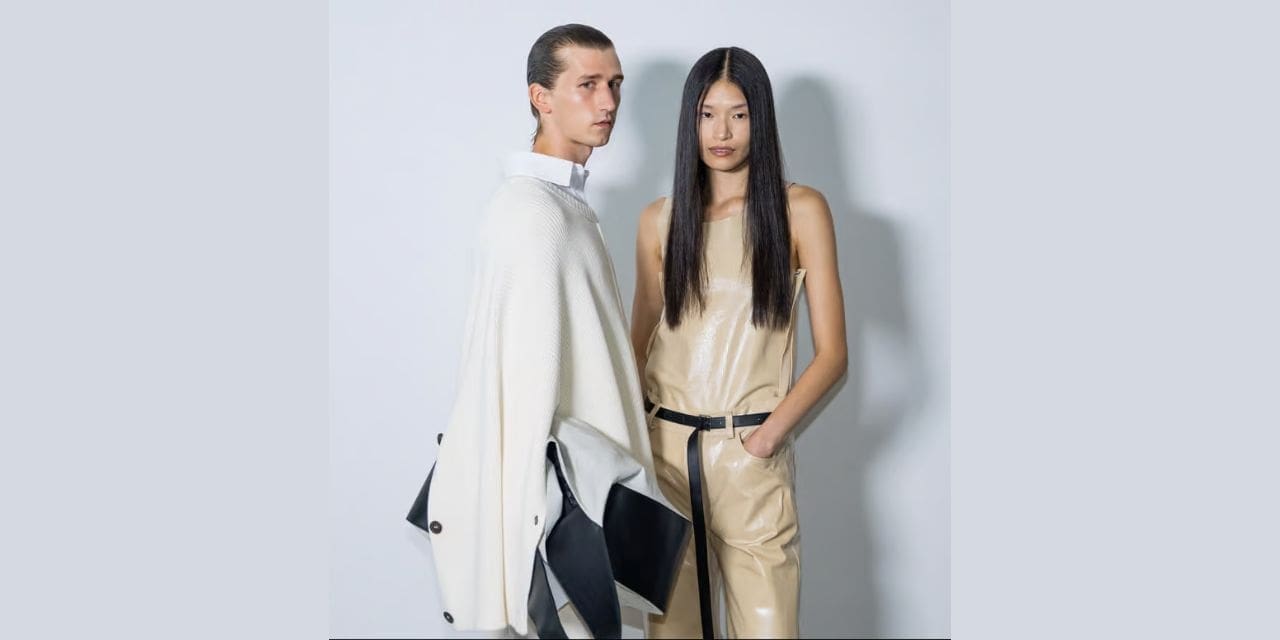It’s not impossible to see a shrimp pack, bag or footwear on the market, according to TômTex researchers. They have made progress in the creation of their sustainable fabric and are now able to precisely manipulate the leather-like material. Even the catwalk has featured it. From the TômTex lab in Brooklyn, engineer Nicole Sved provides Fashion United with her insight.
Manipulation and engineering
The novel textile from TômTex is created from chitin, a complicated kind of sugar found in prawn shells rather than the meat of the animal. Sved reassures, “You may find it everywhere in nature. She describes the building material as a powder that is white, sand-like, and odourless. “As a major waste stream from the shellfish sector, prawn shells are now where we extract it most frequently, although it is found everywhere, including in insects, coffee, and mushrooms.
The process that follows washing the shells is described by the researcher as being water-based. After the chitin is chemically extracted, it is transformed into a “dope,” a lobed substance that resembles amber-colored honey, using a lot of water and chemicals. Then TômTex adds a variety of chemicals. The materials are required to give the material the right colour and texture, but the manufacturer does not want to specify which ones specifically. This liquid substance is applied to a mould and allowed to dry into a film. Then, if required, more relief might be provided using heat and pressure.
“The material can be worked with in a wide variety of ways. You might, for instance, make it appear like Alligator or snake leathers, as well as other textures already in use. Simply examine the runway images. There is a lot of variety, as you can see from the many appearances created by Peter Do and Di Petsa, with whom we collaborated. The latter’s texture so resembles fish scales and is quite translucent, whereas the flexible Peter Do material resembles rubber. There are now no business alliances, “but that may change over the next nine months,” says Sved. The business is growing quickly, however we are still in the R&D stage and finishing a lot of recipes right now.
Feasible and scalable
TômTex’s creator Uyen Tran experimented with another technology in the company’s early stages in the start of 2020 coffee as a material. The researcher reasoned that since millions of tonnes of coffee grounds are wasted each year, that waste stream should also be taken seriously. But the awkward supply chain for prawn shells is a key distinction. Sved: “We wanted something that is always accessible and deeply ingrained in people’s daily lives. In Southeast Asia, there will always be a plentiful supply of shellfish because it is a staple of the region’s culture and diet.
Additionally, a highly advanced infrastructure is required to gather all of the coffee waste produced by coffee goods, businesses, and consumers. Chitin from shrimp shells is frequently removed by shrimp farmers themselves in order to offer it as a raw material that is ready for usage. Producers with significant missions, like TômTex, can better capitalise on that.
No plastic, oil, or toxins
The prawn system is becoming increasingly more effective, particularly in terms of sustainability. Many times, the plastic that should be included in’sustainable’ alternatives to faux leathers like apple leather and grape leather is the target of criticism. Shrimp fabric that resembles leather does not belong on the classification, according to TômTex. The guiding principles are: no plastics, no petroleum, and no poisons. Although the specific chemicals employed in breeding are unknown, they are not harmful. Sved: “Without gloves, you could touch anything and be completely safe. Though we do not advise it, the substance is theoretically even edible.
Brighter colours are produced by TômTex using natural dyes, such as those derived from coloured clay more challenging, however there are lots of minerals with vivid colours that we may utilise. Some organic paints are more environmentally harmful than synthetic ones. It’s still a delicate balance. The colors that endure the best throughout time are now being determined.
The procedure is a lot to make kombucha leather, another sustainable fabric being tested in the biomaterials sector. The drying process presents the same sustainable problem to that fluid component as well. Sved: “That might take a while. While many of the solvents used in the lab speed up the drying process, they are not especially environmentally friendly. Additionally, energy-intensive heaters are frequently needed. The drying procedure needs to be optimised if we wish to scale up.
Suede slouch with shrimp
Production can be scaled up because the technology doesn’t necessitate the purchase of new production methods or simply operates with already-existing equipment. Waiting is largely for material improvement and impact assessment. For instance, it appears that there is no need for industrial operations to entirely biodegrade prawn dust. Sved claims that you may simply toss this substance in with the organic garbage, although normally this is only allowed under stringent conditions, such as a specific pH value or temperature. She acknowledges that because an LCA is now being done for it, “we can’t say with certainty how long it will take for it to completely disappear.”
The TômTex lab is currently filled with primarily ocher coloured paints in all shapes and sizes. There is a lot of experimentation with textures that may appeal to major clothing and fashion accessory products: both new textile looks and leather imitations, with and without pronounced relief. Meanwhile, the CEO of TômTex in Vietnam is looking for a suitable facility. With good luck, commercial production of shrimp shell fabric could begin there in early 2025 – and suede, Sved hints. “We have been using these techniques for some time now. We then add extra cellulose fibers that stick to the film, for that typical soft feel of suede. Cellulose is the third most abundant biopolymer [after chitin] and we will be using both of them soon.”

